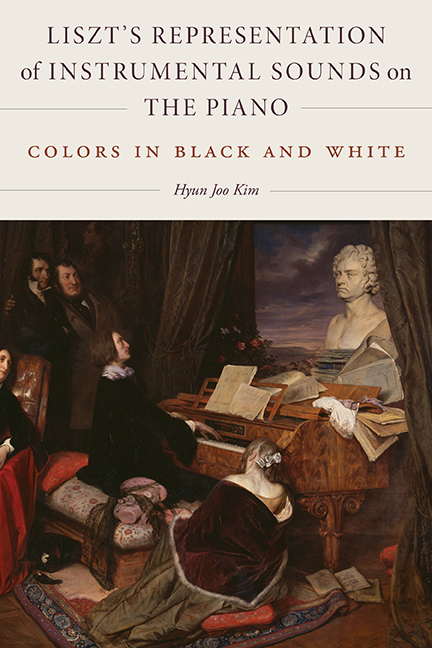Book contents
- Frontmatter
- Contents
- Introduction
- 1 Approaching the Reproductive Arts
- 2 “Partitions de Piano”
- 3 Between “Text” and “Event”: Liszt's Guillaume Tell Overture
- 4 Translating the Orchestra: Liszt's Two-Piano Arrangements of His Symphonic Poems
- 5 Interpretive Fidelity to Gypsy Creativity: Liszt's Representations of Hungarian Gypsy Cimbalom Playing
- Conclusions: Recurring Techniques and Aesthetics
- Appendix: Liszt's Preface to His Piano Arrangements of Beethoven's Fifth and Sixth Symphonies in the Breitkopf & Härtel Edition, 1840
- Notes
- Bibliography
- Index of Liszt's Works by Genre
- Subject Index
5 - Interpretive Fidelity to Gypsy Creativity: Liszt's Representations of Hungarian Gypsy Cimbalom Playing
Published online by Cambridge University Press: 06 September 2019
- Frontmatter
- Contents
- Introduction
- 1 Approaching the Reproductive Arts
- 2 “Partitions de Piano”
- 3 Between “Text” and “Event”: Liszt's Guillaume Tell Overture
- 4 Translating the Orchestra: Liszt's Two-Piano Arrangements of His Symphonic Poems
- 5 Interpretive Fidelity to Gypsy Creativity: Liszt's Representations of Hungarian Gypsy Cimbalom Playing
- Conclusions: Recurring Techniques and Aesthetics
- Appendix: Liszt's Preface to His Piano Arrangements of Beethoven's Fifth and Sixth Symphonies in the Breitkopf & Härtel Edition, 1840
- Notes
- Bibliography
- Index of Liszt's Works by Genre
- Subject Index
Summary
Liszt's first fifteen Hungarian Rhapsodies (which mostly appeared in 1851– 53) immediately draw attention to the pianist-composer's creativity in pianism through his technical innovations and brilliance. Whereas his distinctive approach to notation, layout, and technique is considered his contribution to stylistic innovations in the keyboard idiom, the predominant display of technical brilliance is often thought to cross the line into self-indulgent showmanship. The negative view of him as a showman stems in part from the anti-virtuosity polemics that culminated in the German press of the 1840s. In this intellectual environment, Liszt as the virtuoso of his age became suspicious. His performance of arrangements often radically transformed the original in order to draw attention to spectacle and physicality. Such a style was a target for critics who condemned the virtuosity for its own sake as too corporeal and too sensual, devoid of intellect: in short, “superficial,” “trivial,” “empty,” or simply, in “bad taste.”
In his book Des bohémiens (1859), discussed in chapter 2, Liszt defended his role as a virtuoso who has a duty to give life to the “mute and motionless” creation of a composer. He celebrated Gypsy virtuosity, ornamentation, and improvisation and essentially attributed the major impetus for his creativity to the “exotic” and “natural” elements of Gypsy performance. Yet the controversies surrounding his book—among others, that he gave too much credit to a peripheral group of Gypsy musicians for their contribution to Hungary's national music—have undermined his goal and relegated it to his alleged “falsely interpreted” idealization of Gypsy music. Liszt's imagined, Romanticized, and quixotic representation of Gypsy music affected contemporary reception of both his Des bohémiens and his Rhapsodies, and to some extent that reception has also thwarted research on his reworking methods of capturing Gypsy-band performance styles in realistic detail.
At the other end of the reception spectrum, scholars of Hungarian music have emphasized how faithfully Liszt emulates the elements of Hungarian popular Gypsy bands and reproduces existing tunes and the style of their playing in his Rhapsodies 1–15, lending the impression that it is “as if we heard Gypsy ensembles in them.”
- Type
- Chapter
- Information
- Liszt's Representation of Instrumental Sounds on the PianoColors in Black and White, pp. 102 - 144Publisher: Boydell & BrewerPrint publication year: 2019



